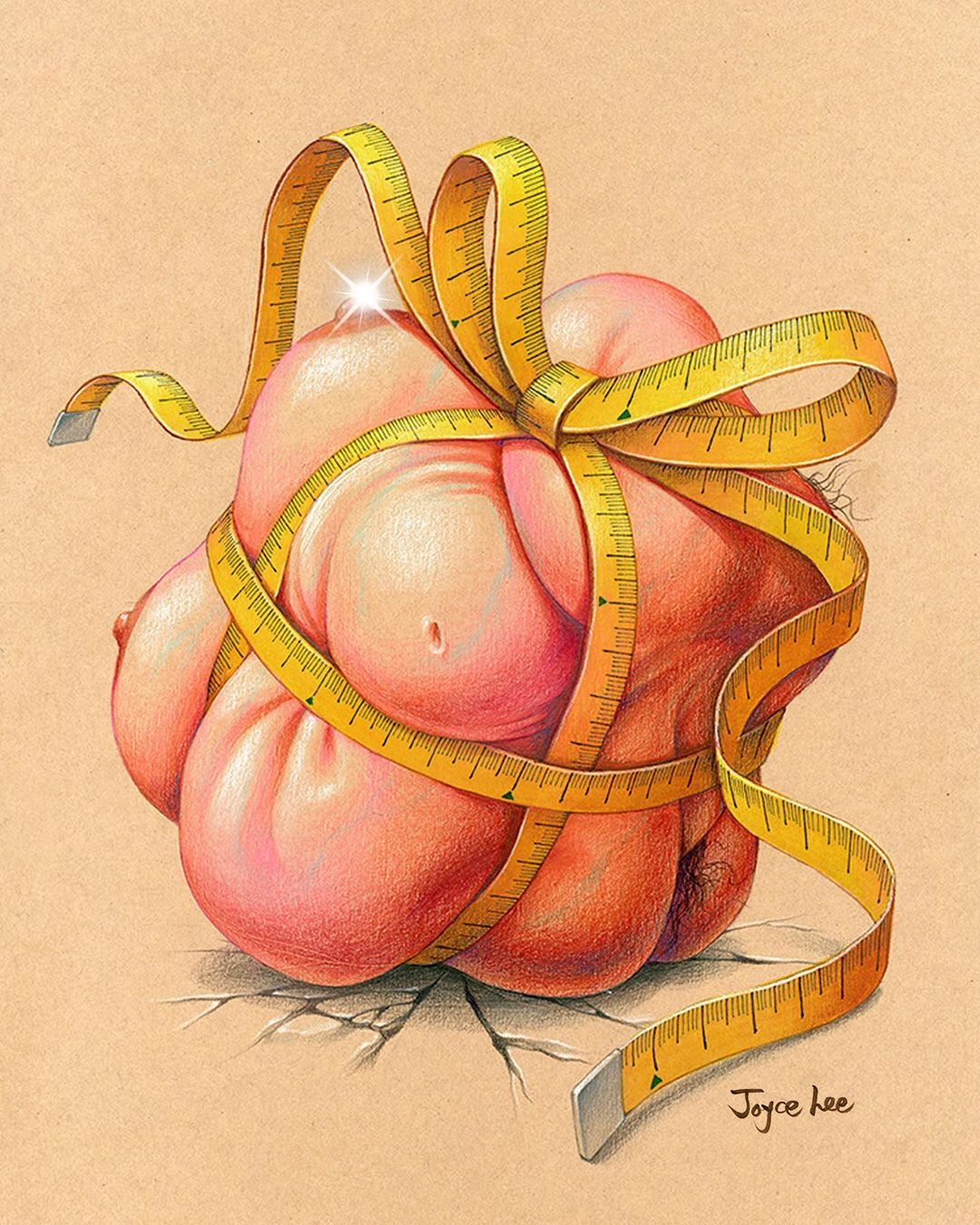Body Dysmorphia
Body Dysmorphia is a mental health condition that affects 1-2% of the population, experienced equally by men and women. It is marked by the intense preoccupation with perceived flaws in ones physical appearance.
People may spend significant periods of time worrying about, and evaluating aspects of their appearance. The common areas that people report being problematic include:
skin: acne, wrinkles, or complexion
Hair: thinning or excessive hair on head or body
Facial features
Overall face shape
Legs, thighs, or calves
Genitals
Stomach
Arms
Scars
Breasts
Bums
Muscles/build
Artist: Joyce Lee
Some unhelpful assumptions people with Body Dysmorphia may experience include:
“If people see these flaws they’ll judge and reject me.”
“If I can fix these flaws others will accept me.”
“If I can notice the flaw, others must be noticing it too.”
“Being ugly means I’m worthless”
Most of the time, the flaws people with Body Dysmorphia are fixated on is either not noticeable by others, or imperceptible.
This is due to issues of perception, and negative bias. Our brains love to identify things that might go wrong. So it will lead our attention toward perceived ‘issues’, and in the case of Body Dysmorphia, there is a fixation on physical ‘flaws’.
For example, we can become very self conscious of physical characteristics, and may try to look at these body parts repetitively. Meanwhile, others may not even notice the perceived ‘flaws’ we’re obsessing over. This is because our attention is being directed toward the flaw, while their’s is not.
Much like when you look at your friends, family, or partners. You don’t define them based on their complexion, or other physical features. You’re more likely to be attuned to their energy or personality.
meme source: Growing Journey
It is important to recognise that body dysmorphia is not simple vanity or dissatisfaction with appearance. It is a distressing condition which is often associated with depression, social anxiety and feelings of shame.
When working with the intersection of mental health and body image, it is important to recognise the function of fixating on the body. Much of the time clients present with body image concerns, eating disorders or body dysmorphia, it is not because of vanity. But rather, the way the body is tangible.
When we’re anxious, we fear things outside of our control or influence. We can’t control the outcome of a job performance, date, exam result, or argument. But we can control our bodies, because they are tangible.
Unlike the outcome of a date, we can physically touch and feel our bodies. And we can influence them. We can pick at them, surgically alter them, starve them, or exercise them which acts to provide a false sense of security about the world around us.
Body dysmorphia often creates significant interference with day-to-day activities, as it can limit one’s desire to leave the house, socialise, and participate in activities such as work or study.
Body Dysmorphia can be maintained by four things:
Preoccupation with appearance (attention repeatedly going toward the perceived ‘flaw’).
Checking behaviours (like excessively monitoring your appearance in mirrors).
Negative predictions about how others will respond to the flaw.
Avoidance and safety behaviours (for example not going out after an acne breakout, or using makeup to conceal it so others don’t notice).
There are a number of ways to overcome Body Dysmorphia, all of which require professional support and therapeutic guidance.
Appearance assumptions can be placed under the microscope in therapy to consider where they come from, what influences have shaped them, and if you’d be happy to apply them to your friends, or children. This helps to challenge underlining beliefs about appearance assumptions, and over time introduce more compassionate language about your body.
Using thought diaries, you can record distressing thoughts, and challenge them with more reasonable perceptions. This helps to create a balance between the body dysmorphia thoughts, and the ‘you’ thoughts that are often more reasonable.
Experimenting with the negative predictions requires some exposure work. You can record the perceived worst case scenario, and equiped with the skills you’ve established with your therapist, start exposing yourself to feared situations. This helps to show yourself you can survive situations you feared, and address any avoidance tendencies.
Body dysmorphia can be a distressing and consuming mental health challenge. If you relate to the above experiences, you can speak to your GP about a mental health care plan, or reach out to us at The Pleasure Centre for support.
References:
Centre for Clinical Interventions- Body Dysmorphia modules.


